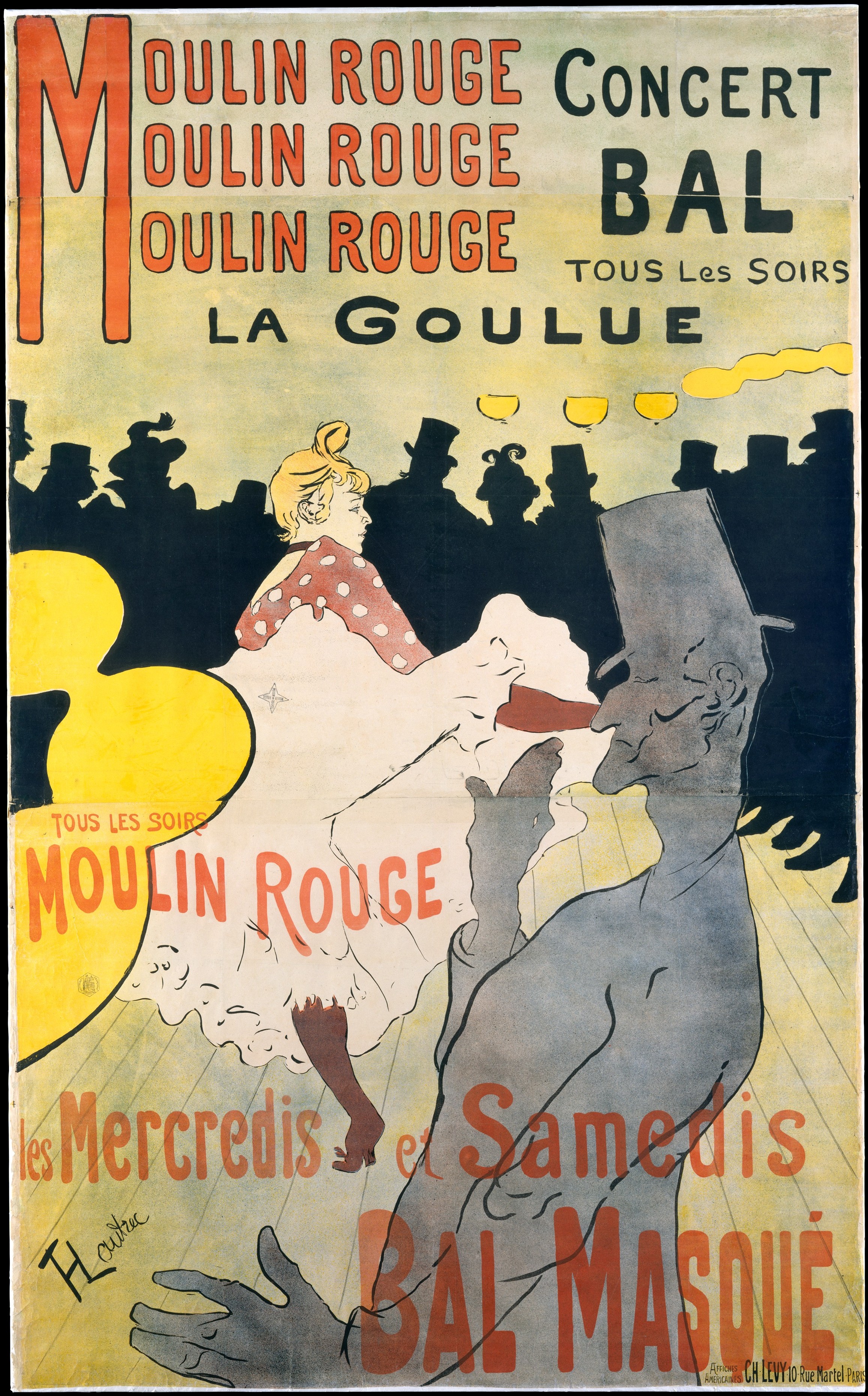Henri de Toulouse-Lautrec

Henri de Toulouse-Lautrec (1864-1901), who was inspired by Degas, based his most characteristic imagery on Parisian nightlife. He frequented dance halls, nightclubs, cafés, and bordellos in search of subject matter. Loose, sketchy brushwork contained within clearly defined color areas contributes to a sense of dynamic motion in his painting.
In At the Moulin Rouge: The Dance of 1890 the artist captures the energy of the dancing couple by their sharp diagonals and flowing curvilinear edges. The woman looking on in the foreground attracts our attention by her bright pink dress and yellow-feathered hat; through her gaze, she leads ours directly to the dancers. At the same time, the man at the left seems to walk off the picture suggesting the passage of time. Figures in the background provided a kind of frame composed of top hats and verticals as they shift from watching and milling around to conversing.
Like Degas, Toulouse-Lautrec used partial viewpoints and floors that tilt upward to suggest photographic cropping. He was also, like Degas, influenced by Japanese prints, using strong silhouettes to offset the more textured areas of his painted surfaces.

In contrast to the textured surfaces of his paintings, Toulouse-Lautrec’s lithograph posters consist of flat, unmodeled areas of color The poster – which Lautrec popularized at the end of the nineteenth century – was not only an art form. Posters such as La Goulue at the Moulin Rouge disseminated information. Because the purpose of a poster is to advertise an event, words convey part of the message. In La Goulue, the letters are integrated with the composition by repetition of the lines and colors of the printed text within the image. The blacks of “BAL” (Dance) and “LA GOULUE” (name of the dancer) recur in the silhouetted background crowd. The flat red-orange or “MOULIN ROUGE” is echoed in the dress and in the stockings of the dancer. And the thin, dark lines of “TOUS Les SOIRS” (Every Evening) are repeated in the floorboards and the outlines of the figures.[1]
- Laurie Schneider Adams, Art Across Time, vol. 2, 4th ed., (New York: McGraw-Hill, 2011), 789-790. ↵

